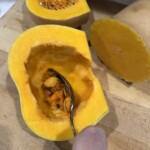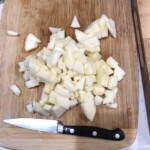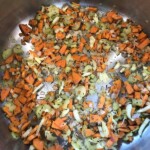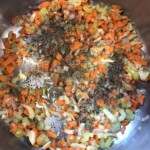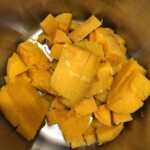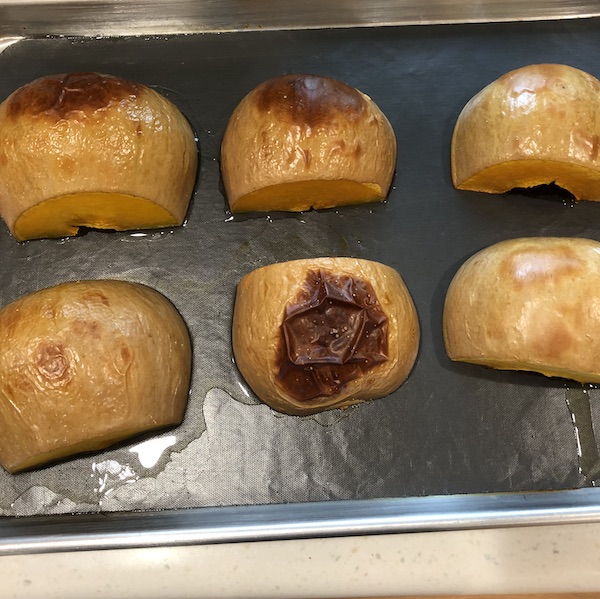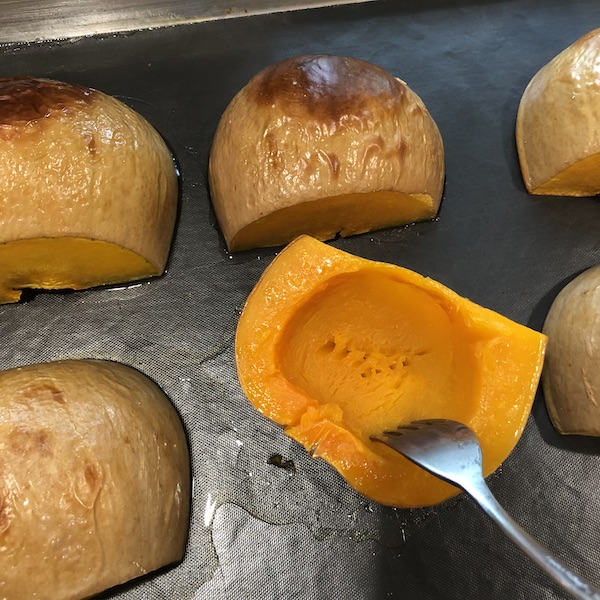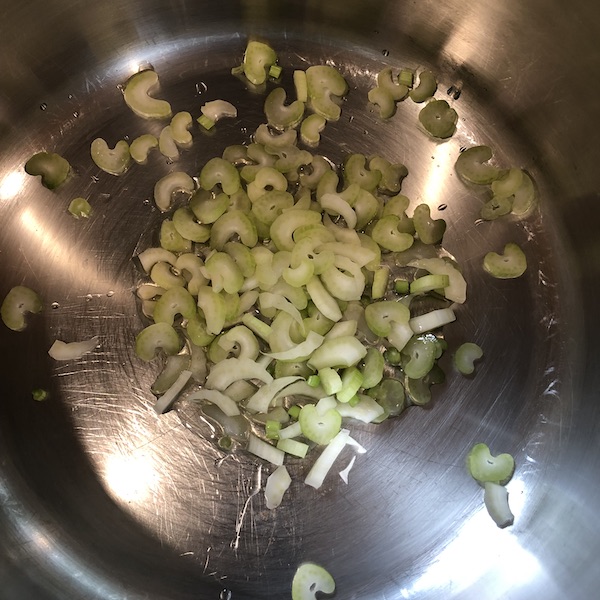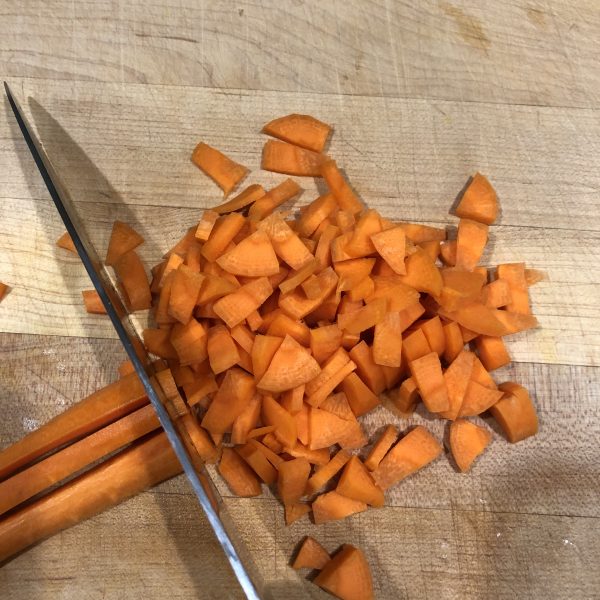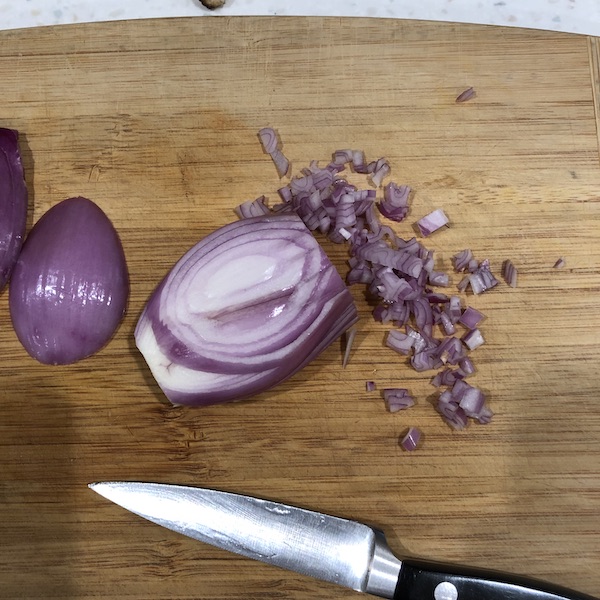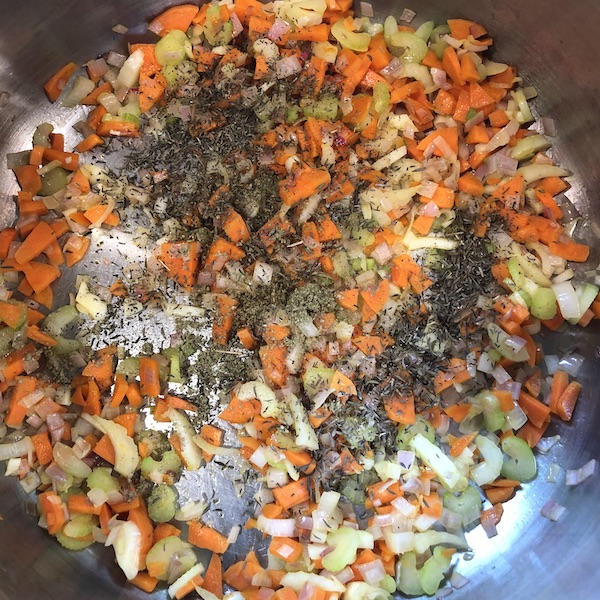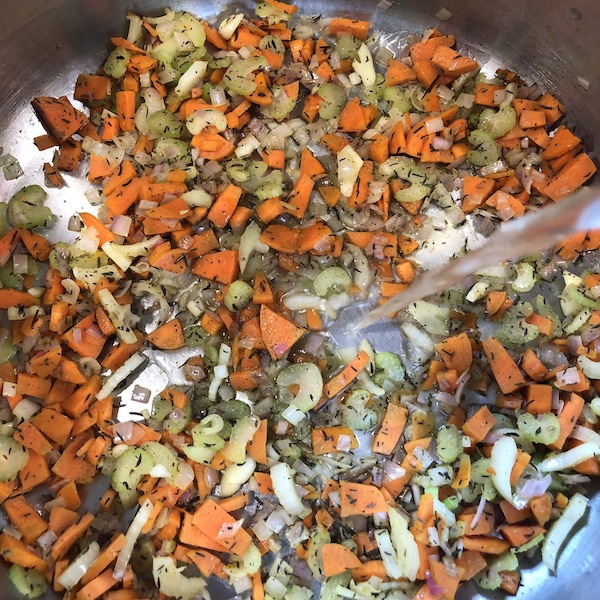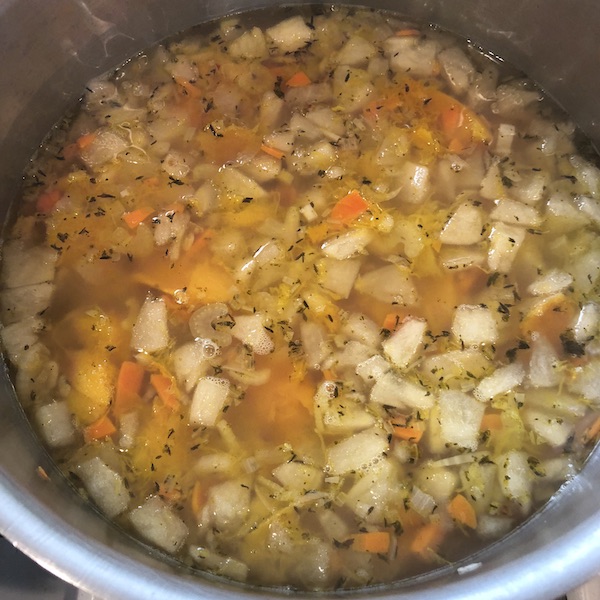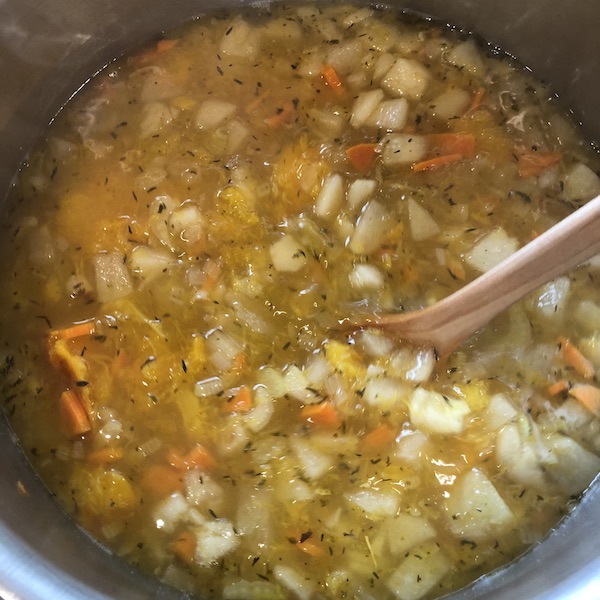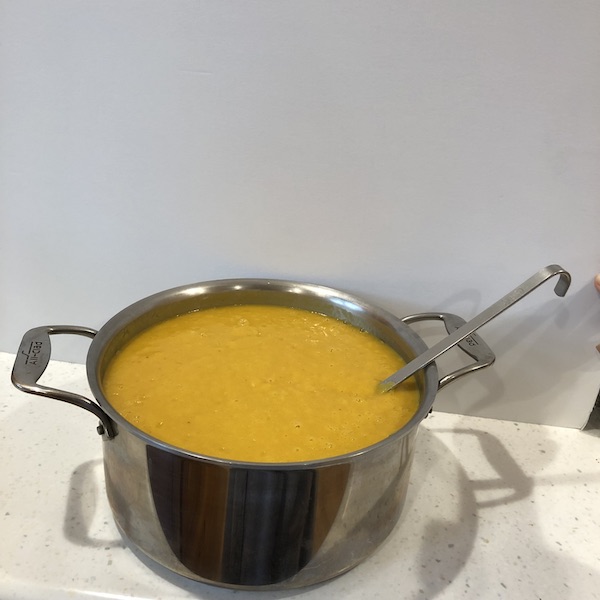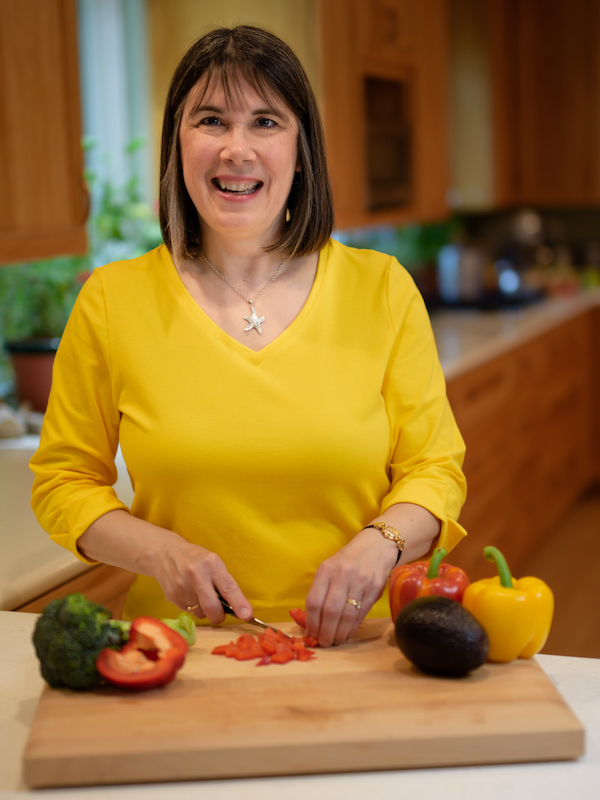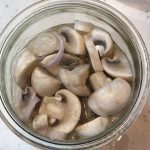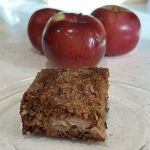My favorite soup to eat out is Panera’s Autumn Squash Soup. On the rare occasion we eat out on the road, I almost always order it.
Last fall I decided to make my own. Four or five different recipes later, I gave up. They were some good ones, but they were not Panera’s.
This year I decided to try something different. I was not going to copy Panera’s soup, rather create my own with seasonings I liked.
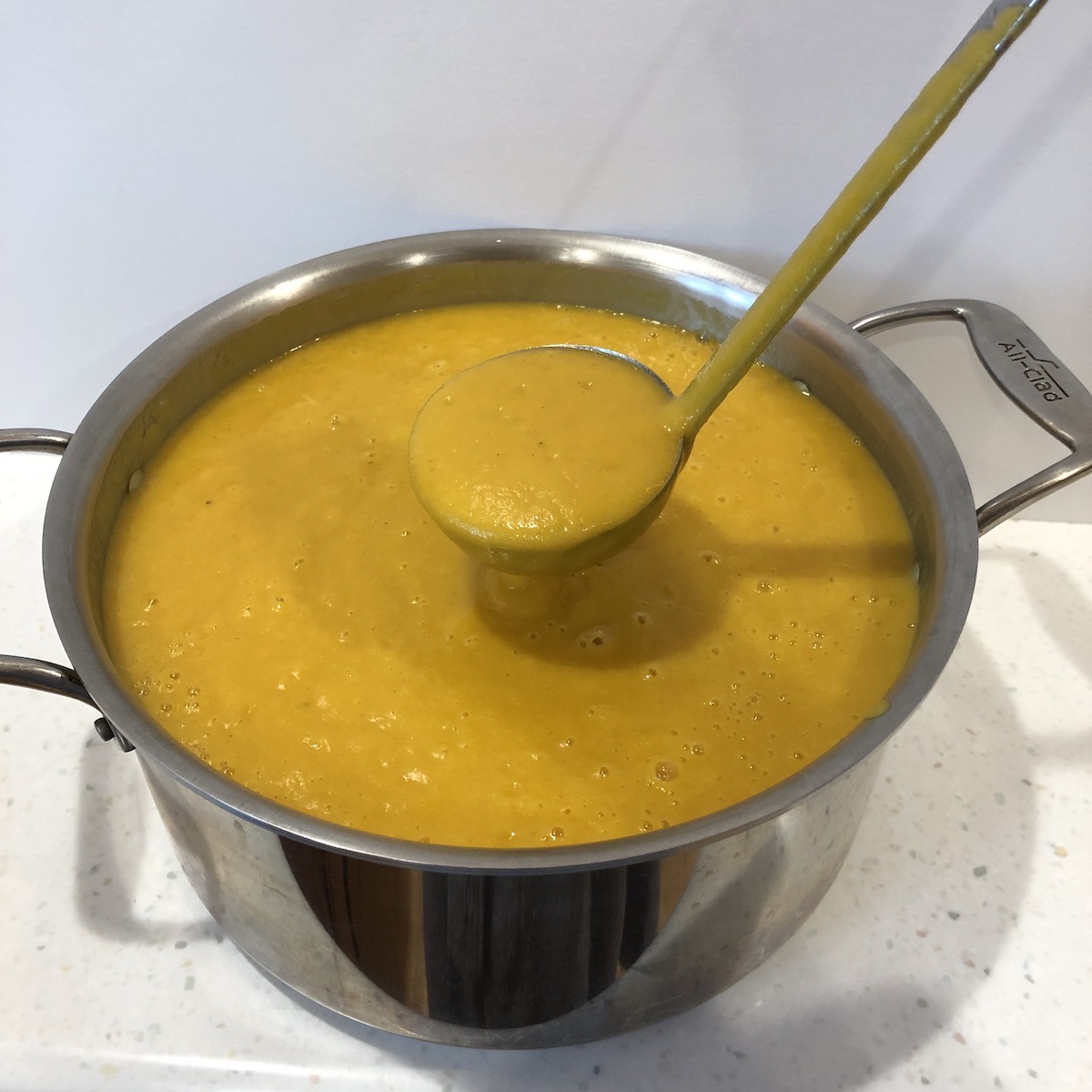
I also did another amazing thing – I used store bought broth/stock. I have made my own stock for years and years. But my migaine sufferer is not eating here on a daily basis right now, so I decided to give it a try and see if we reacted. So far, we are feeling good!!
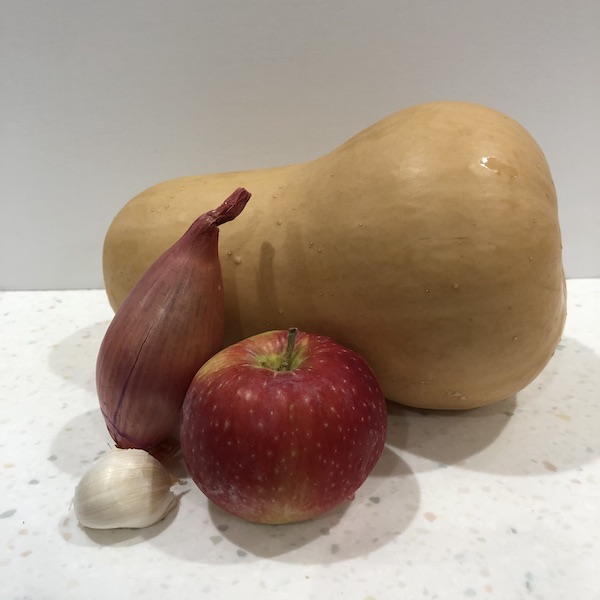
Allergens – none!
This soup is gluten, dairy, nut, peanut, soy, fish, shellfish, sesame free – as long as you read the labels on your soup stock if you do not make your own.
AIP and Paleo
Unintentionally, my butternut squash soup is AIP and Paleo compliant. This means that I think this is honestly the best tasting squash soup – and it just happens to meet AIP and Paleo guidelines. You are NOT sacrificing ANYTHING with this soup. You may need to change a few of the toppings for AIP and Paleo and be sure to read your stock labels if you
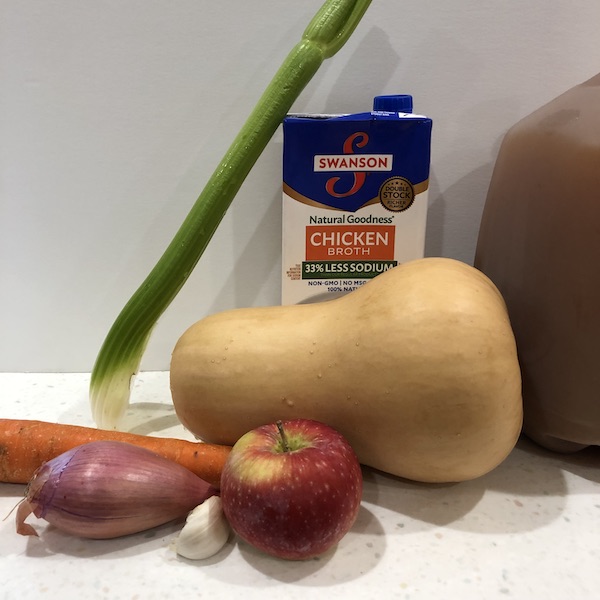 are using canned stock.
are using canned stock.
Ingredients
- butternut or other winter squash
- garlic
- celery
- carrots
- shallots or onions
- apples
- cider
- broth
- thyme
- sage
Variations / Toppings
You can vary the taste of your squash soup by the toppings you add. Try:
- pepitas
- sour cream mixed with a little apple cider syrup
- sprinkle with cinnamon, ginger or cardamom or a combination
- croutons
- chives or green onions
To vary the flavor of the soup, you can use whatever herbs your family enjoys. Thyme and sage are the two that we really like.
You can add warm spices like cinnamon, ginger, allspice if you prefer. Curry would be an excellent addition if your family enjoys curry blends. Experiment to find your favorites. The first time you make it, I suggest you use the spices listed in the recipe (if you like them). To include cinnamon or ginger , sprinkle some on the top or mix it into a small bowl.
For a cream soup, you can add cream, milk, alternative milk or cashew cream to the soup to make a cream soup, but we usually eat it as it is. You can also stir some cream or sour cream into your bowl.
Squash Preparation – two methods
Half the squash, scoop out the seeds and roast it. Then peel off the skin, cut it into large chunks and cook with the other ingredients. Or you can peel your squash and cut it into cubes, and cook it with the other ingredients.
Which method to choose?
The real difference is whether you have sharp enough peeler to easily peel the squash and whether you want to cut it as much when it is raw. I prefer baking it first, but both methods produce wonderful soup. Since I often double the soup and freeze some, I find that by the time my squash roasts, all my other ingredients are prepared and warm for the squash addition.
Roasting the Squash
If you choose to roast the squash before adding it to the soup, here is my preferred method:
- Cut off the squash “neck” right above where the round bulb containing the seeds is.
- Cut off the stem and slice both pieces in half.
- Scoop out the seeds & stringy insides with a spoon. I find it faster to go around the opening of the squash seeds with a paring knife and then just scoop out with a spoon and clean it up.
- Place cut side down on a baking sheet covered with parchment, a reusable baking sheet or coated in oil.
- Roast for about 45 minutes in a 400 degree oven.
- Remove from the oven and turn over the pieces of squash that contained seeds. Stab with a fork to see if it is done. A fork should easily go in and out of the squash.
- It is likely that the larger, thicker part of the squash will take about 15-20 minutes longer. Remove the squash that is done, and place the others back into the oven. It does depend how large your squash is how long it will take to roast.
Soup Preparation
While the squash is roasting, prepare your other ingredients:
First I peel and slice my garlic and let it stand (to let the allicin develop – for more information see The Sensitive Kitchen episode 003)
I prefer to chop my celery first, placing it in the pan with the oil on low heat to begin cooking while I peel and chop the carrots. Then I add the carrots to the pot. Stir about every 5 minutes.
Add the shallots (and garlic if you sliced it) when they are chopped. If you put your garlic through a press, wait until the shallots are almost translucent before you add the garlic.
Add the spices and let them cook for about 30 seconds to bloom their flavor. However you do not want the spices to burn so just after they become fragrant, add the broth so they do not burn.
As the soup continues to heat up, peel and chop the apples. Add the apples and cider to the pot. Partially cover the pot and let the ingredients come to a simmer.
If you have roasted your squash, it should be done soon. As soon as it is cool enough, peel the squash and cut into a few pieces. Add it to the pot.
Cook the soup with the squash for about an hour. It should just be simmering – with just a few bubbles.
Method 2
If you are not roasting the squash, peel it with a sharp vegetable peeler. Cut it into 1 to 2 inch pieces.
Follow the directions above. Add the cubed squash to the soup just after you add the broth. You will still cook about 1 hour after all the ingredients are added. Stab several pieces of squash to be sure they are completely tender. If they are not, cook longer!
Finishing the Soup
When the soup is cooked, you will puree it with an immersion blender or in a blender. If I am using a blender I prefer to have the soup cold when transferring it so I make it the day before and chill in the refrigerator.
I used an immersion blender for a LONG time to puree several quarts of soup. The soup was pureed well, but not as smooth as the soup pureed in my high powered Vitamix blender. If you want soup with a luscious velvety texture, puree in batches in a high powered blender. Both taste yummy and freeze well.
This week squash is on sale at my favorite grocery store. I have stocked up and am ready to fill my freezer! This week I am putting a small gold nugget in with my butternut squashes!
I’d love to hear about how the soup turned out for you and what toppings you enjoy! Keep Cooking To Enable Those You Love To Flourish!
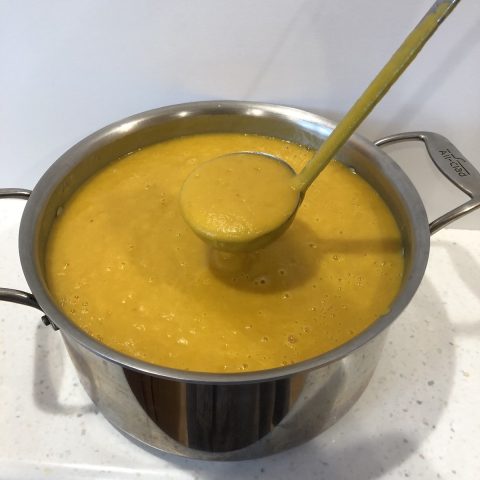
Butternut squash soup (AIP, Paleo, Dairy & Gluten Free)
Equipment
- Immersion blender or blender
- cooks knife
- 8-12 quart soup pot with lid
Ingredients
- 3-3.5 pounds butternut squash *
- 4 large cloves garlic
- 4 stalks celery, sliced
- 2 large carrots, peeled, quartered and sliced or 4 medium carrots, 6 small
- 2 medium shallots or 1 medium onion
- 2 teaspoons dried thyme
- 1 teaspoon dried sage
- 2 apples, peeled and roughly chopped
- 2 quarts chicken stock **
- 2 cups apple cider
- 1 tablespoon oil (your preferred cooking oil. I used avocado.)
Instructions
Squash Preparation
- Preheat oven to 400°.
- Cut off the squash "neck" right above where the round bulb containing the seeds is.

- Cut off the stem and slice both pieces in half.

- Scoop out the seeds & stringy insides with a spoon. I find it faster to go around the opening of the squash seeds with a paring knife and then just scoop out with a spoon and clean it up.

- Place cut side down on a baking sheet covered with parchment, a reusable baking sheet or coated in oil.
- Roast for about 45 minutes in a 400 degree oven.

- Remove from the oven and turn over the pieces of squash that contained seeds. Stab with a fork to see if it is done. A fork should easily go in and out of the squash. If it does not, return it to the oven and roast longer.

- It is likely that the larger, thicker part of the squash will take about 15-20 minutes longer. Remove the squash that is done, and place the others back into the oven. It does depend how large your squash is how long it will take to roast.
- Squash can be roasted days in advance if desired. Store in the refrigerator in an airtight container.
Preparing the Soup
- Peel and slice my garlic and let it stand.

- Slice celery, placing it in the pot with the oil on low heat to begin cooking

- Chop the carrots. Add the carrots to the pot. Stir about every 5 minutes

- Chop the shallots (or onion) and add to the pot with the sliced garlic. Increase your stirring frequence to every 2-3 minutes as you do not want the shallots to burn.

- Peel and chop the apples. You can add them to the pot before or after the broth.
- When the shallots are translucent, add the spices. Stir and cook for about 30 seconds until you smell the spices. Immediately add broth to the pot so the spices do not burn.

- Add the cider.

- Peel the squash. Roughly chop it and add it to the pan.

- Bring the soup to a simmer and cook for about an hour. ***

- Puree the soup with an immersion or regular or high powered blender.

- Serve with your favortie toppings and Enjoy!

Notes
- * weighed whole
- ** use vegetable stock for vegetarian soup
- *** You can place the soup in a large slow cooker at this point if you desire. Cook on low for about 2 hours (check that all the vegetables are completely tender)






